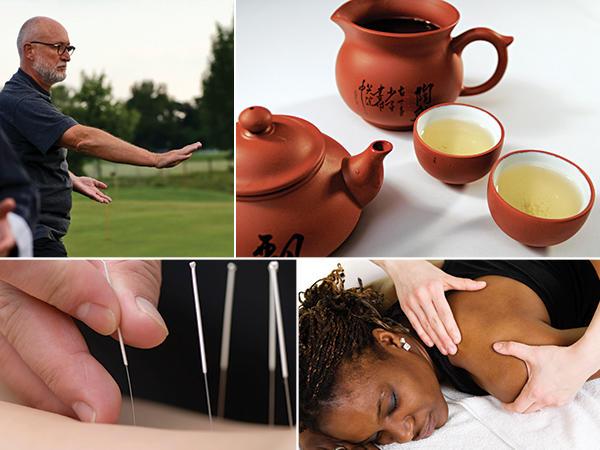Complementary and Alternative Medicine

Overview
Complementary and alternative medicine (CAM) refers to a collection of diverse medical and healthcare techniques, practices, and products that are not traditionally a part of mainstream or conventional medicine. CAM use has gained much popularity, with many individuals worldwide integrating these practices into their health management regime for various conditions.
Types
There are several types of CAM therapies, generally grouped into three categories; natural products, mind-body medicine, and body-based practices.
-
- Natural Products: This involves the use of various natural substances like herbs, vitamins, minerals, and probiotics.
-
- Mind-Body Medicine: These therapies emphasize the interaction between the mind, body, and behaviour. Examples include meditation, yoga, acupuncture, and hypnosis.
-
- Body-Based Practices: These focus on the body’s structures and systems, such as chiropractic and osteopathic manipulation, massage, and reflexology.
Causes
Unlike specific health conditions that have identifiable causes, the use of CAM is usually voluntary, driven by individual preference. Some common reasons include dissatisfaction with conventional medicine, desire for a more holistic approach, personal philosophy, or those suggested by healthcare providers.
Symptoms
Complementary and alternative medicines don’t have symptoms; instead, these therapies often target and alleviate symptoms of various conditions. These can range from physical discomfort like pain, nausea, or fatigue to emotional stressors like anxiety and depression.
Diagnosis
There’s no diagnosis for CAM, as it’s not a disease. Instead, the choice of a CAM therapy would typically be established after a proper diagnosis of an underlying health condition. The patient’s health status, personal preferences, and the nature of the ailment would be considered when deciding which complementary or alternative therapy to adopt.
Treatment Options
CAM offers a broad spectrum of treatment alternatives, allowing patients to customize their healthcare regime. Treatments are often non-invasive and focused on improving overall well-being rather than targeting specific symptoms.
Living With Complementary and Alternative Medicine
Living with CAM involves integrating these practices into daily life. Here are a few tips:
-
- Define your healthcare goals and decide how CAM can best be used to achieve them.
-
- Become knowledgeable about the different CAM practices and stay informed about their effectiveness and potential risks.
-
- Discuss your intention with your healthcare provider to ensure the complementary care is safe and serves to enhance your overall health management plan.
-
- Always follow the recommended procedures and guidelines for the chosen CAM method.
When to Seek Help
While CAM can complement your primary healthcare regime, it’s essential to seek professional medical help when:
-
- Your symptoms persist or worsen, despite using CAM therapies.
-
- You experience adverse reactions or side effects from a CAM therapy.
-
- You have questions or uncertainties about the CAM procedures or products you’re using.
Remember, CAM therapies are meant to supplement, not replace, conventional health care. Always consult with healthcare professionals to ensure safe and effective treatment.
When crafted correctly, your tailor-made CAM plan can help you manage your health and enhance your quality of life while working harmoniously alongside your traditional healthcare treatments. It’s all about balance, education, and a deep understanding of your individual health needs.
